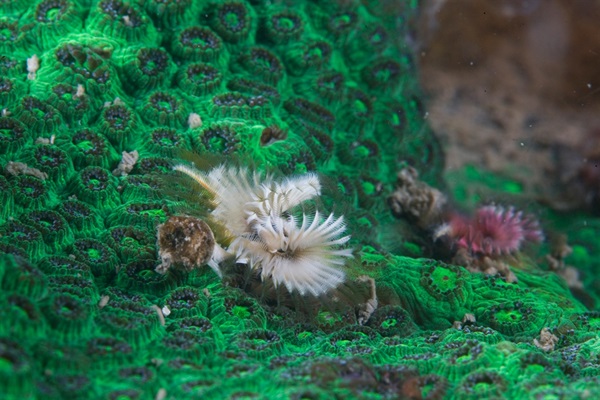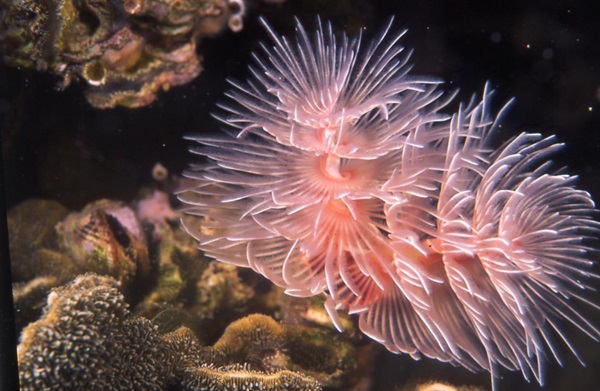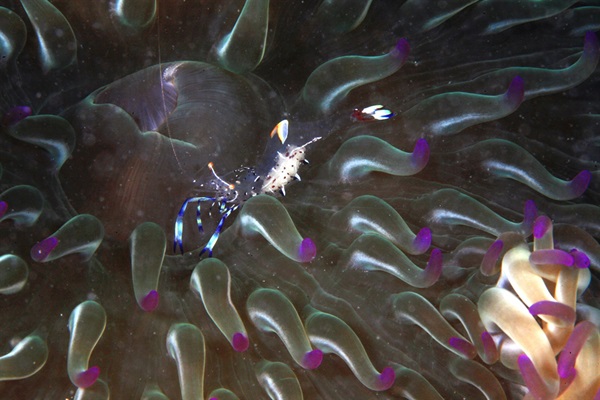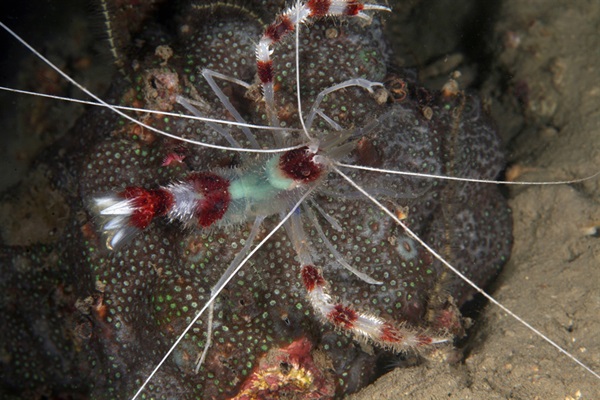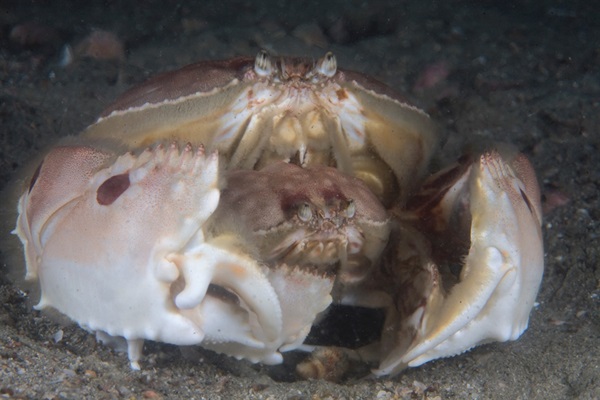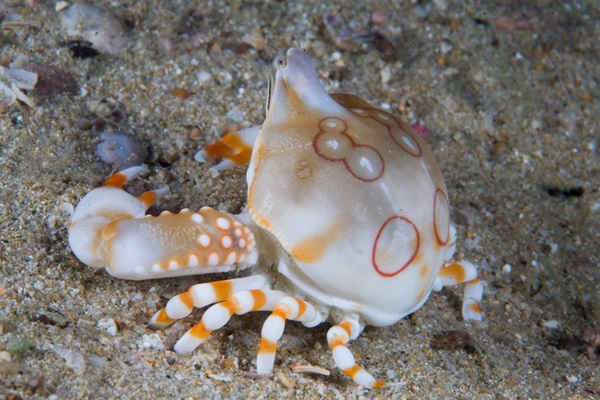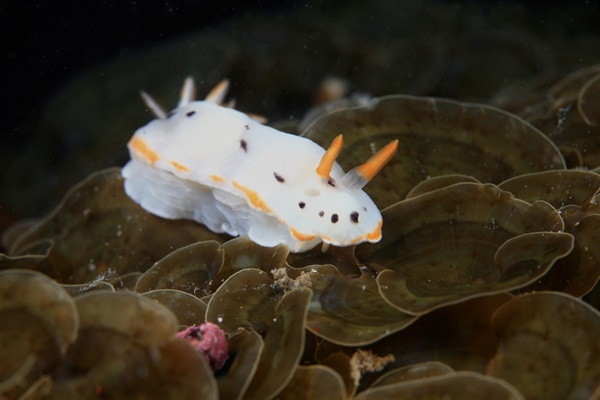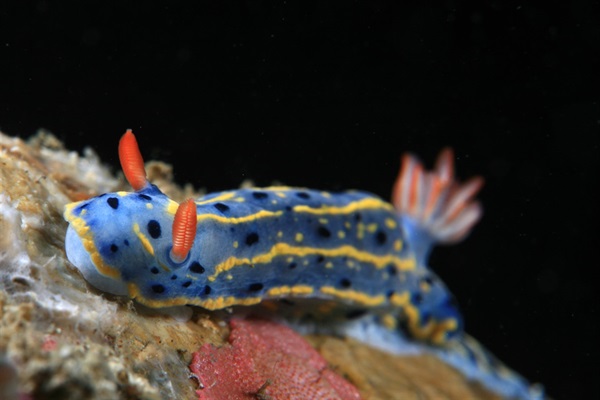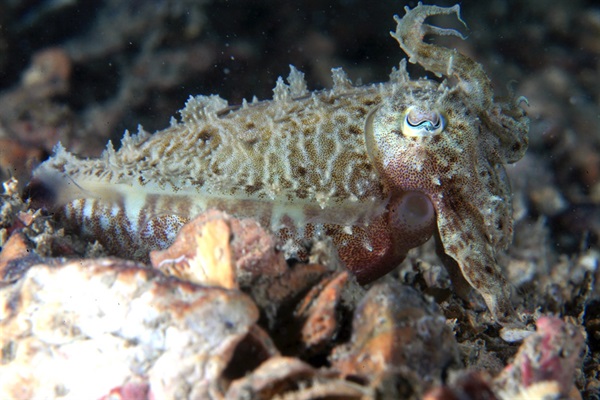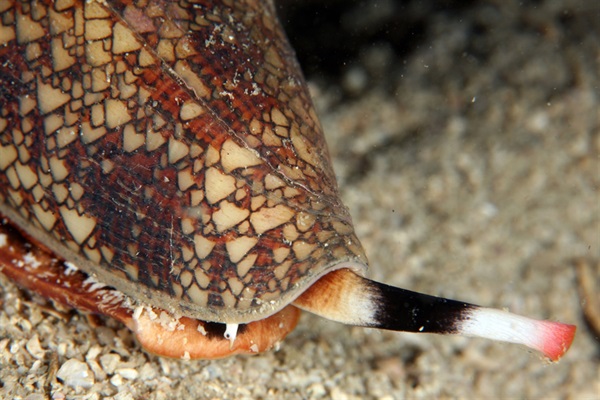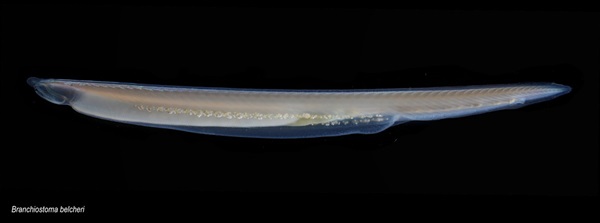Except in Eastern and Southern shores where the shallow subtidal habitat are rocky and coral-encrusted, the majority of subtidal seabed of Hong Kong is soft and comprises an admixture of sand and mud. Composition of the soft sediment varies from place to place and is one of the main factors that determines the type of bottom-dwelling (benthic) organisms which inhabits the sediment. An ecologically healthy and stable benthic community thus sustains a diversity of marine fauna. Marine benthic communities play an important role in nutrient recycling. The conditions of benthic organisms, especially the burrowing forms (infauna), are sessile and therefore, indicative of time-integrated effects of various kinds of environmental stress. Since relatively sessile, the status of well-being of marine benthic communities can be used to reflect environmental conditions, e.g., eutrophication, or effects of man-made perturbations, e.g., dredging operations. Some of the benthic species are unique and are of conservation value. For example, the cephalochordate Belcher's Lancelet (Branchiostoma belcheri) found in sandy seabed in Hong Kong is regarded as a living fossil link in the evolution of marine invertebrates to vertebrates.
Hong Kong's recorded marine benthic species belong to 16 taxonomic groups, including Porifera, Coelenterata, Platyhelminthes, Nemertea, Nematoda, Annelida, Sipuncula, Echiura, Mollusca, Arthropoda, Bryozoa, Phoronida, Echinodermata, Hemichordata, Cephalochordata and Osteichthyes. Marine invertebrates are the major component of the marine benthic communities. Polychaete annelids (Phylum Annelida), crustaceans (Phylum Arthropoda) and bivalves (Phylum Mollusca) are by far the most abundant, comprising over 70% of the total recorded species.
Phylum Annelida: Polychaetes and other worms
Most of the polychaetes are marine dwellers. They are extremely abundant and widespread in the ocean. Many of them are benthic (e.g. bristle worms), while some are pelagic and tube-dwelling (e.g. fan-worms). With different body forms, polychaetes feed in different ways, such as deposit feeding, filter feeding and raptorial feeding. Polychaete species that are usually seen by divers are those that reside in a calcareous tube and have colorful tentacle crowns. The tentacle crowns extend from the tube for gas exchange and ciliary suspension feeding.
Phylum Arthropoda: Shrimps, Lobsters & Crabs
Class Crustacea of this phylum is a dominant group found in the ocean. Crustaceans are characterised by the presence of a rigid external skeleton, a segmented body, jointed appendages, two pairs of antennae and compound eyes. Since they grow continuously throughout the life cycle, their shells are moulted and replaced at regular intervals. Some species of shrimp and crab form symbiotic relationships with a large variety of organisms, including sea urchin, starfish, sea anemones, coral and so on. Reasons for these relationships vary depending on the partners involved; in most cases it is shelter, protection and/or mutual acquisition of food.
Phylum Mollusca
Mollusca is the second largest phylum after Arthropoda. A special feature of this group of marine invertebrates is its diversity of body forms. Generally, molluscs are derived from a fundamental body plan, a head with well-developed sensory organs and a large soft body mass containing all internal organs. Most molluscs possess a calcium carbonate shell and a muscular foot. However, evolutionary change in some groups has resulted in reduction, internalization or complete loss of the shell, as well as reduction or modification of the muscular foot. Many molluscs are commercially valuable; cuttlefish, octopus, many bivalves and various gastropods are highly prized food.
Phylum Chordata
Amphioxus or lancelet is a marine invertebrate, with an adult body length of 5‒7 cm depending on species. It is a primitive representative of the Phylum Chordata, and the only group which belongs to subphylum Cephalochordata. Amphioxus resembles a simple fish in appearance. The body is elongated and slightly flattened with segmented muscles, the notochord extends as far as both ends of the body, and the head is not well defined. Amphioxus may seem to not be distinct in external appearance, but it is recognized as the closest living invertebrate to the vertebrates. It possesses the unique structures of notochord, hollow dorsal neural tube, segmented muscle blocks (myotome) and perforated pharyngeal (pharyngeal slits) region.
